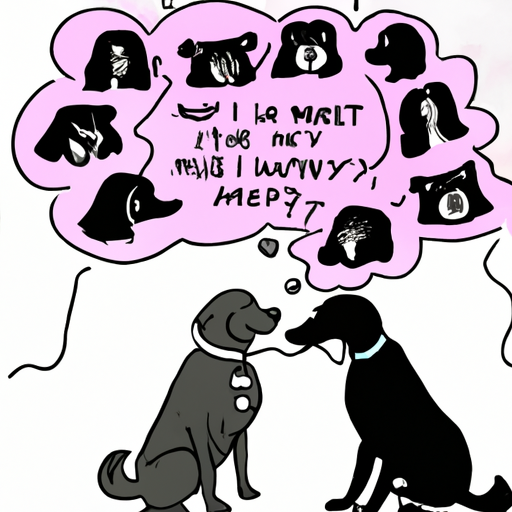Dogs can be a mystery at times, and one of their behaviors that often baffle us humans is licking. This canine habit, while seemingly odd, has a range of underlying meanings. This article aims to demystify these licks and help you understand what your furry friend might be trying to convey.
Key Takeaways:
- Dogs lick as a form of communication.
- Licking can be a sign of respect or submission in the canine world.
- Excessive licking may indicate a health issue.
- Positive reinforcement can help manage your dog’s licking habits.
Table of Contents:
- The Language of Licks
- Understanding the Lick
- When Licking Becomes a Problem
- Managing Your Dog’s Licking Behavior
- Frequently Asked Questions
The Language of Licks
Just like humans, dogs have a language of their own. They communicate with us through various means, one of which is licking. So, what does it mean when your dog licks you? Is it their way of showing love? Or is it a sign of something else?
According to PetMD, dogs lick for a variety of reasons, and it’s essential to understand the context to interpret their behavior accurately.
Understanding the Lick
-
Affection: Dogs often lick people they are fond of as a means of expressing their affection. It’s their way of saying, “I like you, and I want to be close to you.” This behavior is similar to how humans show affection through hugs and kisses.
-
Submission: In the canine world, licking can also be a sign of respect or submission. By licking you, your dog might be acknowledging that you are the leader of the pack. This principle is explained in depth in this article about canine behavior.
-
Taste: Sometimes, your dog might lick you simply because they like the taste of your skin. This could be due to the salt on your skin or the flavor of something you’ve touched recently.
-
Attention: If your dog wants your attention, they might resort to licking. This is especially true if you have reinforced this behavior previously by giving them attention when they lick.
When Licking Becomes a Problem
While occasional licking is normal and harmless, excessive licking could indicate a problem. It could be a sign of anxiety, boredom, or even a health issue. According to American Kennel Club, if your dog’s licking seems excessive or obsessive, it’s a good idea to consult a vet. This article on dog health provides more comprehensive information on potential health issues that could lead to excessive licking.
Managing Your Dog’s Licking Behavior
If your dog’s licking is becoming a problem, there are ways to manage it:
- Distraction: If your dog starts to lick obsessively, try to distract them with a toy or a game.
- Training: You can use positive reinforcement to train your dog to stop licking on command.
- Consult a Professional: If the licking continues despite your efforts, consider consulting a professional dog trainer or a behaviorist.
Frequently Asked Questions
1. Why does my dog lick my face?
Dogs often lick faces to show affection or submission. They might also do this to explore their environment as they can gather a lot of information through their sense of taste and smell.
2. Is it unhealthy for dogs to lick humans?
Generally, it’s not unhealthy for dogs to lick humans. However, dogs can carry bacteria or parasites that can be harmful to humans, especially if they lick open wounds. It’s always best to keep your dog’s vaccinations up-to-date and maintain good hygiene practices.
3. What should I do if my dog licks excessively?
If your dog is licking excessively, it could be a sign of a health issue or anxiety. It would be best to consult a vet to rule out any potential health problems.
Understanding your dog’s licking behavior can bring you one step closer to understanding their unique language. Remember, every dog is different, so it’s crucial to observe and understand your dog’s specific behaviors and reactions. Learn more about these behaviors in this dog behavior guide.



